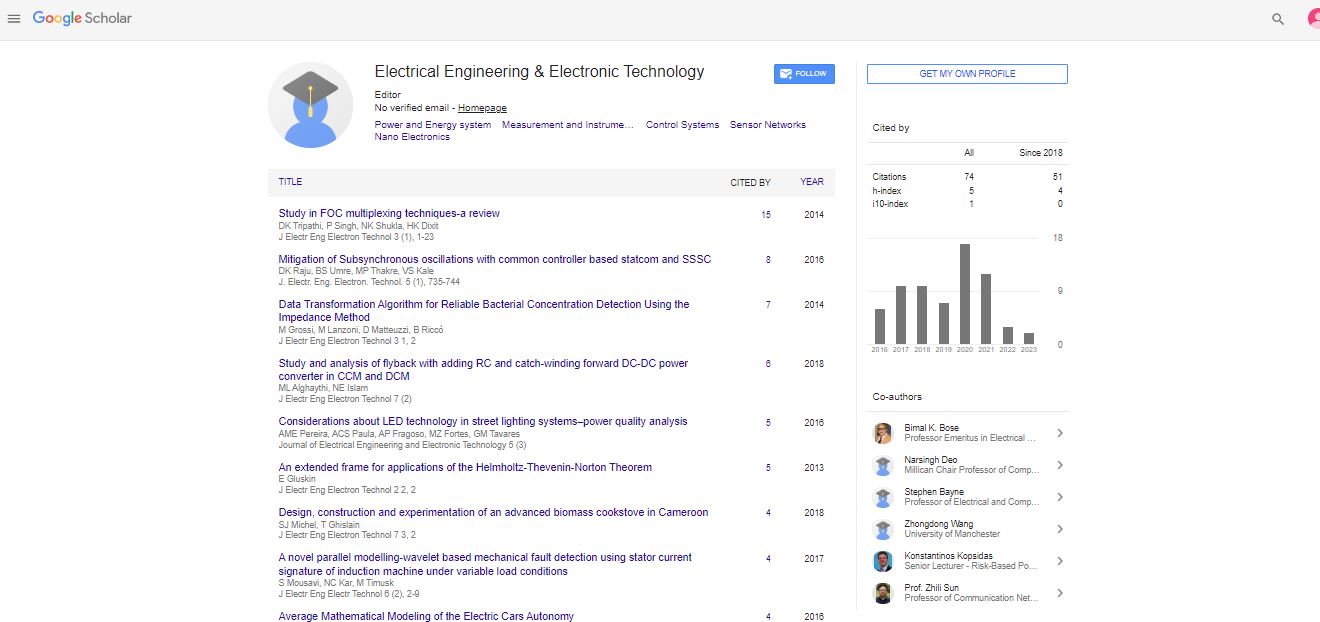Novel plasmonic sensing strategy based on semiconductor nanocrystals
Wing-Cheung Law, Tai-Lok Cheung and Nanxi Rao
The Hong Kong Polytechnic University, Hong Kong
: J Electr Eng Electron
Abstract
Nanoparticle-mediated sensing has become a major focus of research activity in recent years. The distinct features of the variety of nanoparticles have attracted significant attention in the chemical/biological sensing communities due to their capability of sensitivity improvement. It is important to know that a fast, reliable, high-sensitivity and cost effective biosensor would enable us to effectively impede the harmful substances around us, preventing potential disastrous outcomes. Recently, Luther et al. demonstrated that the absorbance obtained from the cation-deficient semiconductors results from LSPR of free holes. They found that in the case of Cu2-xS, the wavelength of the LSPR absorbance peak is very sensitive to the concentration of free holes. The Manna group investigated the possibility of reversibly tuning the absorption band of Cu2-xSe. They could tune the hole-implicated LSPR peak of Cu2-xSe by oxidizing the NCs using a cerium (IV) complex. These novel nanocrystals have also been shown to have potential in biomedical applications. Hessel et al. and Liu et al. have shown the potential of Cu2–xSe as a potent photothermal therapeutic agent, and as a powerful contrast agent for photoacoustic imaging, respectively. However, these heavily doped semiconductor NCs have not yet been used for chemical sensing purposes. In this abstract, detection and quantification of heavy metal ion (e.g. Pb2+) using Cu2-xS NC will be introduced.
Biography
Wing-Cheung Law obtained his BE and MPhil degrees in Electronic Engineering from The Chinese University of Hong Kong in 2003 and 2005 respectively. He received PhD degree in Electrical Engineering from State University of New York at Buffalo, USA in 2011. Prior joining the Hong Kong Polytechnic University as an Assistant Professor in the Industrial and Systems Engineering, he has been serving as Research Assistant Professor in the Institute for Lasers, Photonics and Biophotonics of State University of New York at Buffalo, USA, conducting researches in the field of biophotonics and nanomedicine. His research focuses on building nanoparticle-based biosensing system and translating the bench-top setups into final products. He received two patents on designing surface plasmon resonance biosensors. He has published more than 80 peer reviewed journals and served as a reviewer for 20 international journals.
 Spanish
Spanish  Chinese
Chinese  Russian
Russian  German
German  French
French  Japanese
Japanese  Portuguese
Portuguese  Hindi
Hindi 
